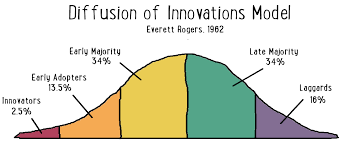After The Flood
By John Kennedy
Be sure to see the INSIGHTS Video Series at the end of this blog article.

In 2016, the small mill town of Ellicott City, Maryland experienced a catastrophic “1,000 Year Flood” that decimated the downtown area along with nearly 100 small businesses. The damage to the town was physical to the properties, psychological to the owners and residents, and financial to the businesses. Over the following two years, Ellicott City committed to rebuild, recover and renew their economic and emotional value to the great state of Maryland.
Unfortunately, in 2018, a second “1,000 Year  Flood” followed and any traction and recovery that had been gained was not only stopped, but set back by what some suggest may be a decade. Some businesses will not recover, rebuild, or renew. An Air Force Veteran hero who was helping to rescue a woman lost his life as well. His name was Eddison Hermond. May his memory be a blessing.
Flood” followed and any traction and recovery that had been gained was not only stopped, but set back by what some suggest may be a decade. Some businesses will not recover, rebuild, or renew. An Air Force Veteran hero who was helping to rescue a woman lost his life as well. His name was Eddison Hermond. May his memory be a blessing.
I have recently revisited Ellicott City to see with my own eyes the progress that is being made to rebuild, recover, and renew, and I was struck by the resilience of the shop owners and businesses that are committed to returning to town (new or existing) while I was equally saddened by the number of buildings and businesses that are up for sale, abandoned, or no longer standing. The physical, psychological and financial harm that was done (not just once but twice) was not recoverable for some.
To add insult to injury, then came the virus…
I feel this current crisis is a similar tragedy as the floods…so many small businesses throughout small towns in America are reeling from its effect on life as we knew it. Instead of it being local or regional though, it is national and global.
The lessons and blessings from this pandemic are similar to those learned from the Great Ellicott City floods—Build. Back. Better.
The key elements of the “new now” in the garden center world are many in number—Innovation and the speed of change, leveraging talent and technology, developing/driving e-commerce, health and safety relating to staff and customers, financial wellness, personal self-care, team engagement, legal/HR issues that may arise with employment, and many more. In essence, everything is on the table in this new now and nothing should be either taken for granted or dismissed out of hand as we navigate the next steps moving forward… “after the flood.”
In this article, I am going to tackle just a one of the above-mentioned impacts: Innovation. In a new video that will be released next week to The Garden Center Group, I will tackle employees and a team approach to hiring back (or not) your existing or new staff. Keep an eye out in GROUPtalk.
Innovation: In Simon Sinek’s book “Start with Why”, he highlights the different types of people and companies as they approach innovation and change management.
There are “innovators” that are usually well ahead of the curve and are nimble and flexible in their approach to change. They make up about 3% of businesses. Next there are the “early adopters” that make up about 13%. They are not quite risk takers, yet they are also not risk averse. They are happy to wait and see how the “innovators” blaze a trail, and then they follow in that direction.
These two groups have adopted change as a core value and have been ahead of the curve in embracing technology and e-commerce solutions for their clients for years. As the Covid-19 pandemic silently spread and infected our nation and the world, the innovators were already set up for the “convenience economy” while most other businesses were embracing the “experience economy” (the third economy is “price”).
Amazon is currently hiring 100,000 new employees to meet the need and rapid shift from the “experience economy” to the “convenience economy.”
Wegmans, Chick-fil-A, Insta-Cart, and even small restaurants had already engaged in curbside pickup, and many others were making headway in this direction. Their adaption to the “new now” was fairly seamless (other than the extremely important health challenges of social distancing, masks, sanitizing, national and state guidelines and employee/customer safety).
The next two groups from Simon’s book are the Early and Late Majorities. They each represent about 34% of the business population and are usually hesitant to change based on fear of change, blurred vision of the future, lack of creativity, intellectual laziness, or financially challenged. The time it will take for them to catch up to the early adopters/innovators is longer, more challenging, more expensive and often times too late.
The final group (16%) are the Laggards (Noun: A person who makes slow progress and falls behind others). Their adaption to change timeline still remains in the 1980’s.
The key to this event or crisis is this-- Who we were prior to the pandemic does not need to define who we are moving forward.
I know many garden centers that within a few quick weeks jumped from a Late Majority to Early Adopter/Innovator. I call that “forced innovation” and I am totally cool with that. Whatever it takes to get the outcome that is needed is just fine as long as you learn the lesson, celebrate the blessing, establish the “new now” and never look back.
The new “convenience economy” that your customers are now receiving from you today will become the new “experience economy” that they will expect from you tomorrow. It will never be the same again. And the quicker we are able to accept this truth, the quicker you will recover and Build. Back. Better.
Ellicott City, Maryland will never be the same. Some buildings will forever be unoccupied or demolished. The back to back crises the city and businesses endured (along with a horrific fire the decade before) had a physical element that is not present in the Covid-19 Pandemic. A small blessing in comparison to the headwinds we are all facing moving forward.
The psychological and financial elements are omni-present in both examples.
May you overcome them with Grace, Faith, Hope, Love and Patience…things that God delivers daily… if asked. May you find them today.
See John Kennedy's new Video Srries, INSIGHTS- Build. Back. Better. HERE
Want to discuss a team challenge with John Kennedy? Call or email him!
John Kennedy
[email protected]
Cell: 443-605-7095
REMEMBER: Your interaction (by phone and email) with Group Service Providers such as John Kennedy, Robert Hendrickson, Steve Bailey, Sid Raisch and Jean Seawright, are included in your retainer!
